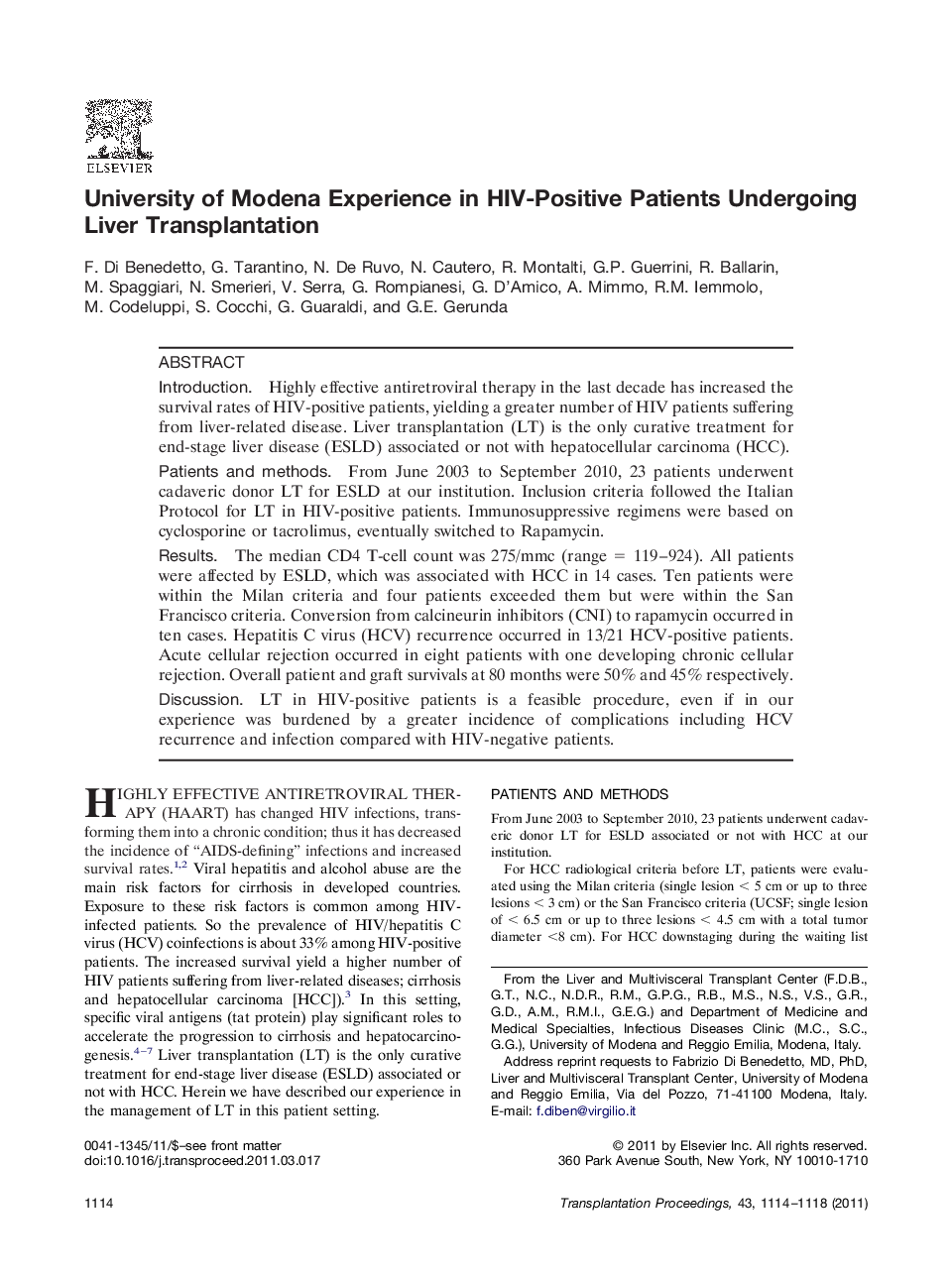| Article ID | Journal | Published Year | Pages | File Type |
|---|---|---|---|---|
| 6249494 | Transplantation Proceedings | 2011 | 5 Pages |
IntroductionHighly effective antiretroviral therapy in the last decade has increased the survival rates of HIV-positive patients, yielding a greater number of HIV patients suffering from liver-related disease. Liver transplantation (LT) is the only curative treatment for end-stage liver disease (ESLD) associated or not with hepatocellular carcinoma (HCC).Patients and methodsFrom June 2003 to September 2010, 23 patients underwent cadaveric donor LT for ESLD at our institution. Inclusion criteria followed the Italian Protocol for LT in HIV-positive patients. Immunosuppressive regimens were based on cyclosporine or tacrolimus, eventually switched to Rapamycin.ResultsThe median CD4 T-cell count was 275/mmc (range = 119-924). All patients were affected by ESLD, which was associated with HCC in 14 cases. Ten patients were within the Milan criteria and four patients exceeded them but were within the San Francisco criteria. Conversion from calcineurin inhibitors (CNI) to rapamycin occurred in ten cases. Hepatitis C virus (HCV) recurrence occurred in 13/21 HCV-positive patients. Acute cellular rejection occurred in eight patients with one developing chronic cellular rejection. Overall patient and graft survivals at 80 months were 50% and 45% respectively.DiscussionLT in HIV-positive patients is a feasible procedure, even if in our experience was burdened by a greater incidence of complications including HCV recurrence and infection compared with HIV-negative patients.
